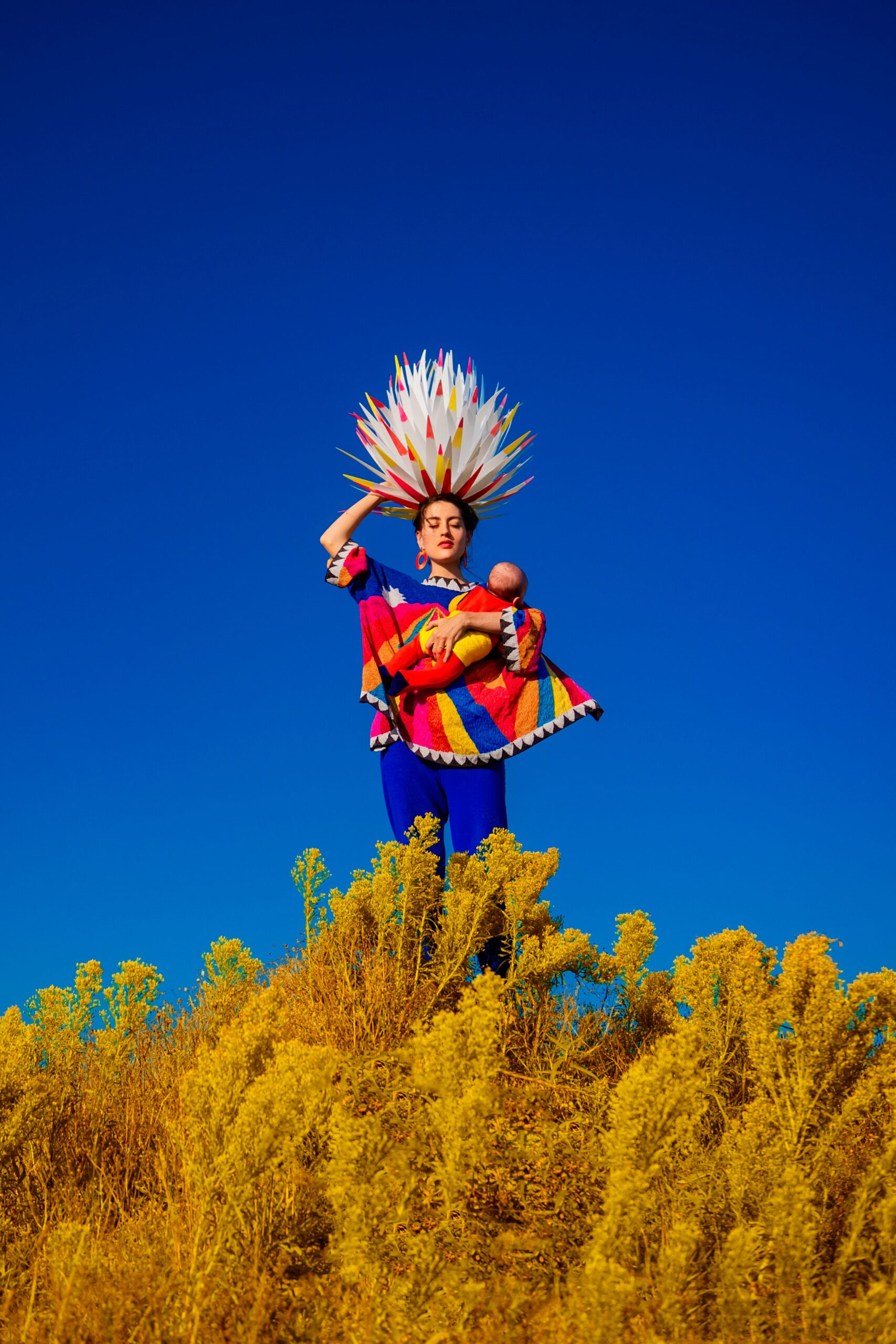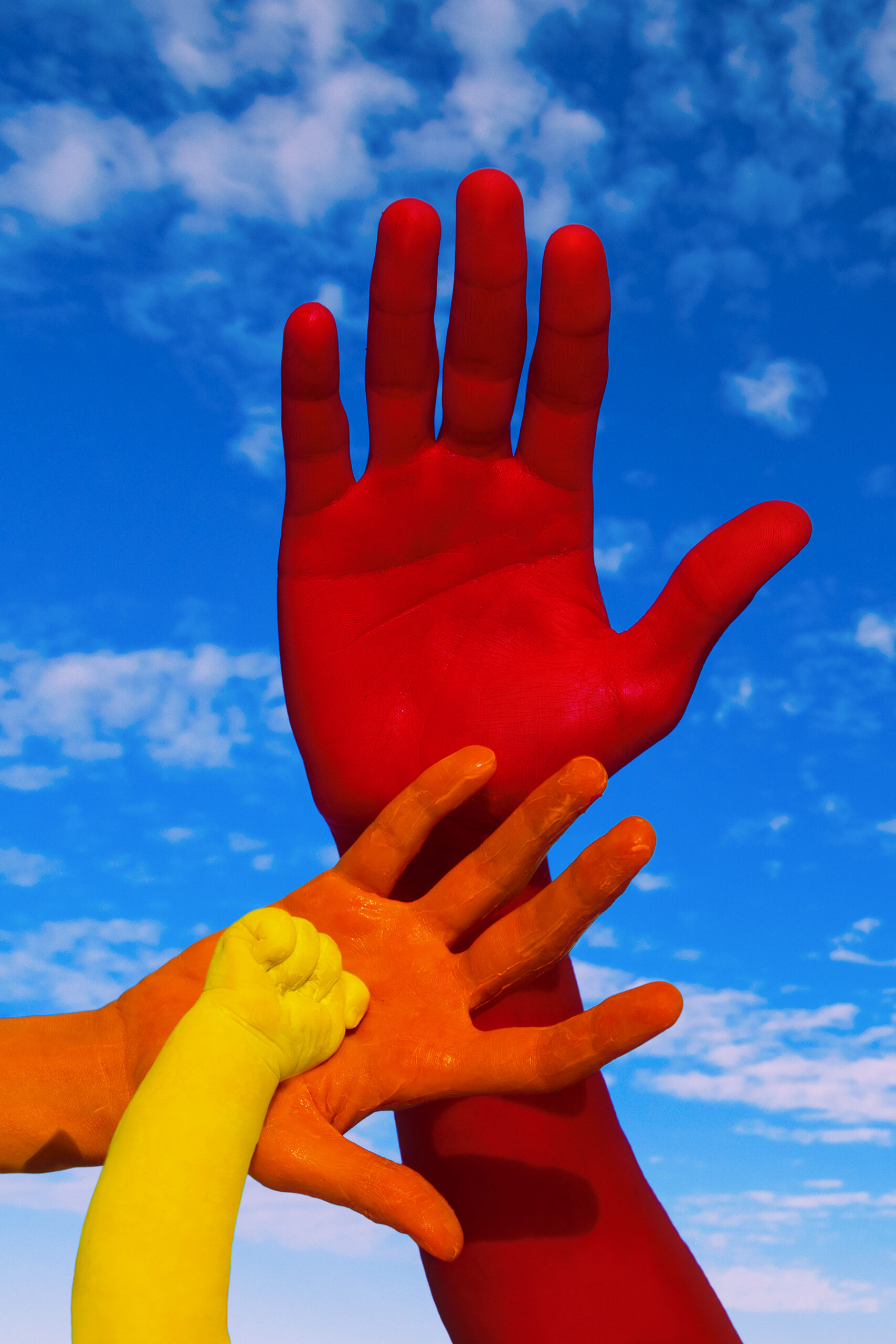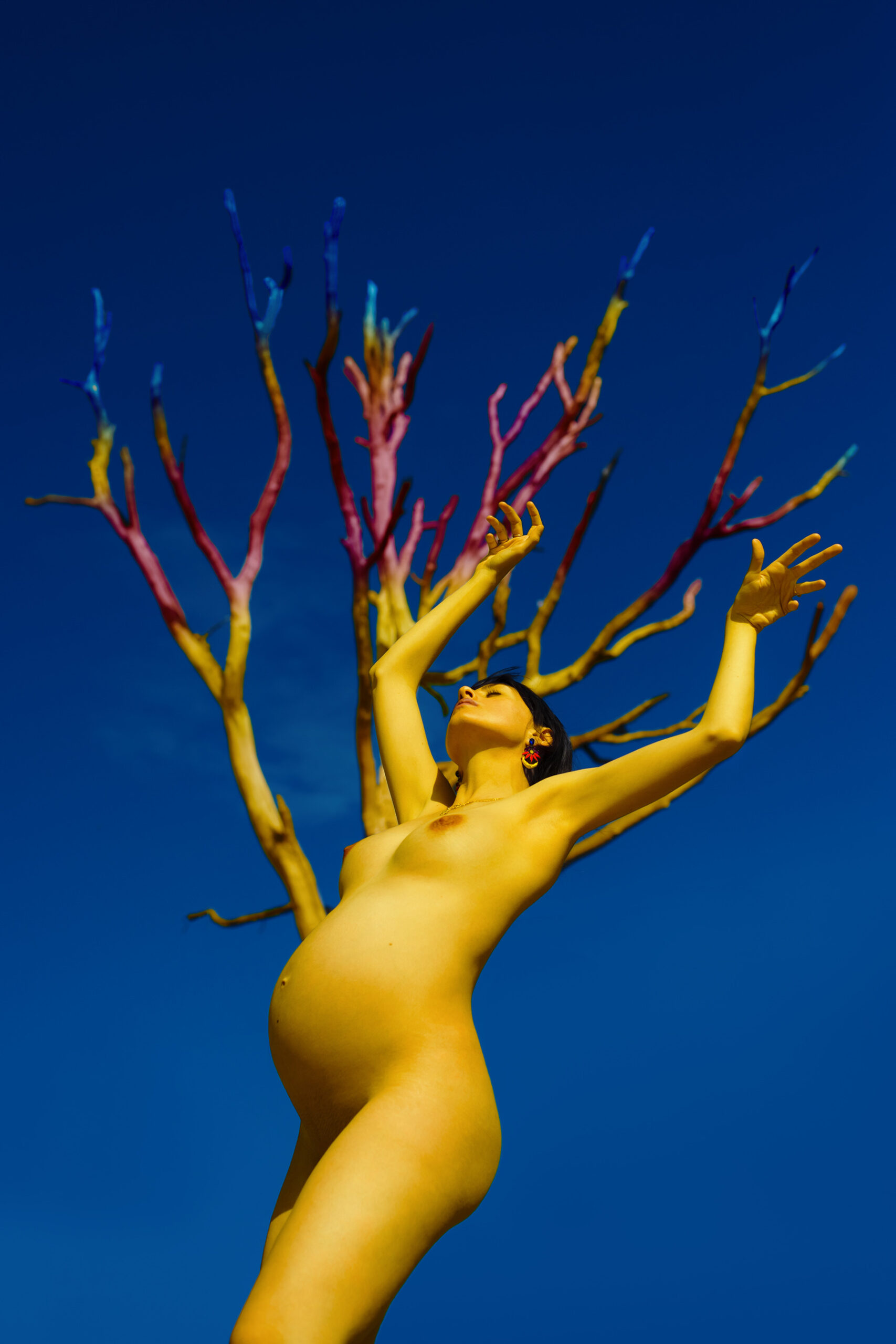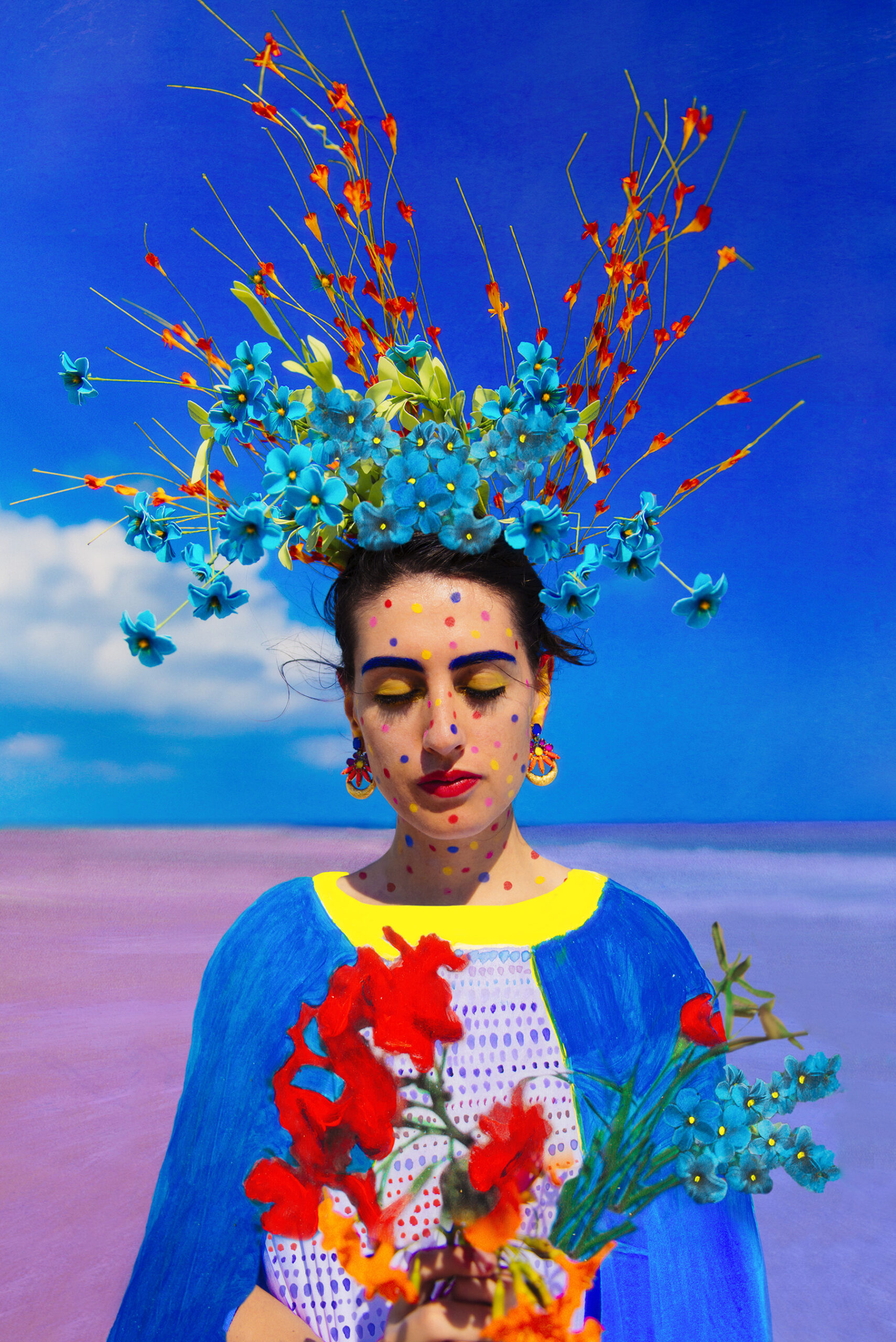The latest artist to be featured in the Netherlands Fotomuseum’s Gallery of Honour

Dutch-Croatian photographer Sanja Marusic lets her imagination saturate the lens of her camera. Known for her use of colour, geometric constellating compositions and a dreamy lightness to her subject matter, we spoke with the artist in light of her upcoming exhibition within the Gallery of Honour at the Netherlands Fotomuseum. Beginning her journey at 15 upon receiving her first camera, Marusic’s blossoming curiosity and willingness for creating her own playful world is something she has carried with her. After graduating in fashion photography from the Royal Academy in the Hague, Marusic has since been featured in exhibits at Mauritshuis, the Van Gogh Museum, Paris Photo, Wynwood Art Miami, and Foam Amsterdam, among others. Marusic’s first solo exhibition, Out of This World, will be on display at Netherlands Fotomuseum in Rotterdam from 18 February to 18 June 2023. Together with curator Mira Matic, the two have constructed a surreal experience emblematic of entering Marusic’s artistic mind.
Hi Sanja, thank you so much for talking with me today. Maybe it’s nice if we begin with a little bit of a backstory about your art and how it all began.
Yeah of course. It started when I was around 15. I was a little bit naive and childlike, naturally I was trying out different things. I didn’t know what photography was all about, but it fascinated me somehow so I continued experimenting with my camera. And then when I was 17, I felt like I wanted to give it a serious try, so I decided to look into applying to an art academy. When I saw that the Royal Academy in The Hague, the KABK, taught fashion photography, I thought, that sounds so cool, maybe I want to be a fashion photographer. I was very young when I started, only 18, but I’m very happy and grateful that I made that decision back then because I photograph to this day.
How have these first steps impacted your work today, for example with fashion photography?
Well the funny thing is, I don’t do fashion photography anymore (unless it fits my aesthetic). I did photograph a lot for Glamcult back in the day, actually! What I think influenced me most, though, is how I began; I just started photographing myself and sometimes my little brother or sister, but it was still very childlike, very raw, playful and inexperienced. Then, when I went to the Art Academy, I dipped my toes into a lot of different things. When I graduated I made my first self-portrait again, and that is when I realised, this is what I like. It felt so good and so genuine to myself, which was refreshing since the fashion stuff didn’t fully feel like me.
You mentioned finding things that fit within your aesthetic and your identity, which in itself is so strong. But I’m curious, how would you describe your identity as an artist?
The first thing everyone always points out is my colour usage because it’s very bold and bright. But my aesthetic is really about creating my own reality.


How would you say you do that?
I start by making my photographs very minimal, so I remove a lot of elements, for example, a tree in the background or a bench in the foreground. In other words, I break it down to its basic character to make it more abstract. Then I choose my colours. Within this, I am already creating my own world. Since I primarily photograph humans, I like to create sculptures and forms rather than focusing on the real person. Sometimes I don’t even show their faces because I always want the subjects to be a kind of sculpture within the image. I’m always searching for some kind of abstraction.
Your work also presents a balance between maximalism and minimalism, alongside surrealism and realism. Is this intentional?
Precisely, it’s that possibility of the ‘real’ that fascinates me. It’s not like René Magritte, whose works are totally crazy, but my work still opens a space for people to wonder, “hm was that mountain really purple or was Sonja really standing before this scene?”.
The narrative story, however, remains very real …
All the stories embedded in my photographs are personal stories. But I still choose to hide parts of my face in the self-portraits, because I want people to be able to identify themselves in my work. My point is not to make a personal diary, and so I avoid doing so by making my work more abstract.
Congratulations on releasing your second photography book! Alongside featuring within the Gallery of Honour exhibition at the Netherlands Fotomuseum, you have a lot going on.
Yeah, my book is coming out February 17th. It’s my second book, however my first book with a publisher, so this is new for me.
You decided to launch both a book and an exhibition at the same time. How has this been?
I already knew beforehand that doing two big projects at the same time is not the best idea, but I figured having such a big exhibition that is open to the public would be the perfect time to make a second book. People kept telling me that it would be easier and better to do them separately but in the end I finished the book and it feels rewarding knowing that I did it.
It’s a very big accomplishment. I think from a purely career standpoint, it’s the perfect combination to be self-promoting through these two mediums. Could you tell me a little bit about the series that you’ll be sharing at the Gallery of Honour within the Netherlands Fotomuseum?
Yes, so it begins with a series I made: an overview of work between 2006 and 2023. Since it spans such a large time frame, it’s a big step for me. It’s something I’ve never done before. I’ve previously shown three series in one exhibition, but with this one since the photographs are from a larger number of series people have the chance to see my progress and experimentation. A chronological process occurs and my growth becomes something more visible. So that to me, feels the most exciting; that I can show what I have been working on for the past ten years.
The context of the exhibition must also be, quite literally, an honour! How does it feel to be placed in this context, beside so many fellow iconic artists and creatives?
Like a dream, actually. As a child I didn’t have a lot of aspirations or dreams that I was reaching to attain. When people would ask me, ‘What do you want to accomplish in five or ten years?’, I would tell them ‘I don’t really know’. But then I started to have the dream to have an overview exhibition. And it happened sooner than I expected. So that feels really surreal till this day. Like, wow, is this really happening?

What do you do when you’ve hit your goal? When you didn’t have so many expectations to begin with?
I’m thinking of taking this same exhibition to another place, maybe I’d even do a travelling tour. That would be the next goal. But this fulfils my first dream, so now I’m secure with whatever happens.
That’s very inspiring and must feel like a push in a positive direction. That brings me to my final question and lingering curiosity; although you haven’t actually seen the layout of your work yourself in the space, do you have any expectations or hopes for the audience when they view it?
I’m aiming for the exhibition to feel like a second world, separate from the world we know and are used to. When you walk inside the building, it’s not a traditional open exhibition, it’s a kind of maze that you have to navigate. When you go inside, you don’t know what will happen. It becomes a tour through the many worlds I have created, passing from one room to the next. My hope is that in going through this experience, people will feel some kind of escapism. You have the chance to go into this crazy world where you will feel something. Something that will be different for everyone.
The beauty in this is, whatever people experience is likely to always be slightly different to what you expect.
Yes, I also feel like this exhibition is like an experiment because it’s so bold. It’s not a conventional way of making an exhibition; creating a maze and having a myriad of rooms. The curator I worked with has been doing her job for 25 years and even she told me that she’s never done something like this before.

Words by Grace Powell
Learn more about the Gallery of Honour & Plan your visit!
Photography by Sanja Marusic